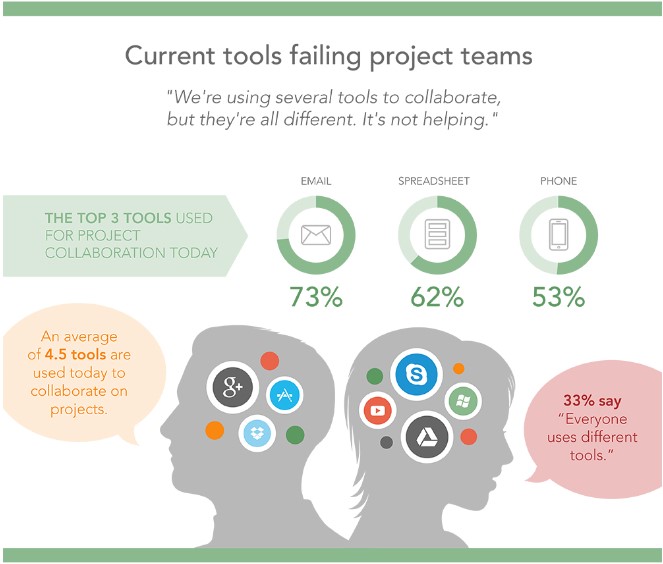
Adopt the Right Project Collaboration Tools to Get Work Done.
Today there are a plethora of collaboration tools and apps available out there. And as we are thrown into the fires of “accidental project management” and grass roots project execution, we look for tools and technologies that will help us improve project and team collaboration. However, most of us instinctively run to what’s commonly readily available – you guessed it – email and spreadsheets – and as we find shortcomings in those tools we seek newer, more modern solutions to help keep pace. These are the findings of an Appleseed Partners survey, commissioned by Planview, of 200 people based in North America who manage or participate in projects.
The survey respondents revealed that their top three tools for collaboration are email (73 percent), spreadsheets (62 percent), and the phone (53 percent). About 40 percent of respondents said they have tried other online collaboration tools, such as cloud-based storage, online cloud tools, and shared spaces. Unfortunately, when it comes to the collaboration needs of modern, virtual teams, these solutions offer limited capabilities.
Complicating collaboration efforts even more, the survey showed that instead of improving project and team collaboration, we create the opposite – a Tower of Babel – where everyone ends up using different tools (4-5 different tools) in an effort to better collaborate on projects.

Shockingly, 33 percent also said that no one on their team is using the exact same set of tools. How does anyone keep track of actions and project milestones with that many moving parts?
Inevitably, senior management, project managers, and team members report major disconnects and worries about missing information. The result is that teams waste nine weeks per year, according to the survey.
As tempting as it is to adopt new technology, it would appear the use of these disparate tools only takes us full circle – back to the tried and true email to stay focused on daily priorities. Email has a role but is not a viable solution for today’s teams.
It’s time to end email addiction, reduce the number of tools, and get everyone on the same page to improve project collaboration! I invite you to read the e-book, “Everyone is a project manager: A study and guide to successful project collaboration.” In it you will find the four things the survey respondents said they want in a project collaboration solution.




